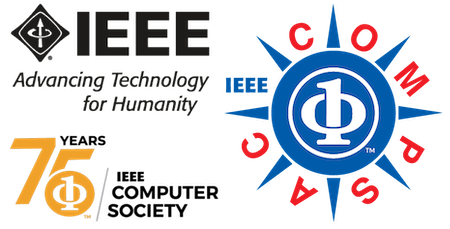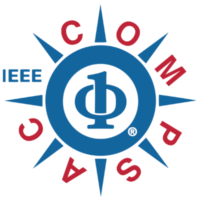SIoT: Smart IoT Systems & Applications
Call for Papers
IoT-based scientific research has recently become an imperative component in monitoring human daily lives and leveraging the enabling technologies including smart objects, smart sensing, cloud and edge computing, and big data analytics. The IoT has created an explosion of sensor data due to the increased number of smart devices with embedded smart sensors. This ranges from smart watches and smartphones to healthcare wearable and head-mounted devices. The recent increase in availability and use of smart wearable devices and the ubiquity of smartphones allows the ability of caregivers to monitor health conditions on a continuous basis. Many of the smart-wearable devices are part of human-in-the-loop Cyber Physical Systems (CPS). The Internet has changed drastically the way we live, moving interactions between people at a virtual level in several contexts spanning from the professional life to social relationships. The IoT has the potential to add a new dimension to this process by enabling communications with and among mobile phones and smart devices, thus leading to the vision of obtrusiveness or in other words ‘‘anytime, anywhere” computing and communications. Additionally, the IoT is a key enabler for the realization of future embedded smart world as it allows for the interaction with/between the tiny smart things leading to an effective integration of information into the digital world. The basic idea of this concept is the pervasive presence around us of a variety of things or objects – such as tiny sensors, actuators, smartphones, u-things, etc. – which, through unique communication and interaction schemes, are able to communicate with each other and cooperate with their neighbors through wireless communication to provide quality services for users. The challenges and opportunities arising from a proper integration of the IoT with mobile computing and applications create a fascinating research field that deserves more in-depth investigations. On the one hand, wearable devices are expected to become the joining link between connected smart objects, the Internet, and end-users. Thus, the coupling among mobile technology, such objects and an embedded infrastructure constitutes the Mobile and Embedded Internet of Things. The smart IoT has the potential to revolutionize future software and hardware applications by influencing the real world entities to achieve better quality of life for next generation of human.
The aim of this symposium is thus to bring together practitioners and researchers from both academia and industry in order to have a forum for discussion and technical presentations on the recent advances in the area of smart embedded IoT. It furthermore serves as a forum for the research community to discuss open issues, novel solutions and the future development of IoT applications. Submissions could consist of theoretical and applied research in topics including, but not limited to:
1) System architectures for the IoT targeted to application scenarios,
2) Wireless Energy Harvesting for the Internet of Things,
3) Security and privacy in embedded IoT scenarios,
4) Interoperability of protocols for IoT,
5) Context awareness in the smart IoT,
6) Experiences in building smart wearable IoT platforms,
7) Embedded systems and applications built using IoT,
8) Enabling technologies and standards for the IoT,
9) Routing protocol for low power and lossy networks (RPL) in IoT,
10) Power consumption and optimization in embedded IoT, and
11) Fault-tolerance and reliability in embedded IoT applications,
12) Middleware and platforms for embedded IoT applications.
13) Social and organizational aspects on smart IoT systems development
14) University education and industrial training for smart IoT systems development
The symposium seeks original, unpublished high impact research manuscripts on all topics related to the development of embedded IoT. Papers will be selected on the basis of novelty, technical merit, presentation effectiveness and impact of results.
Important Dates
UPDATED: Main conference papers due: 18 Feb 2021
Paper notification: 15 April 2021
Camera-ready and registration due: 31 May 2021
Authors are invited to submit original, unpublished research work, as well as industrial practice reports. Simultaneous submission to other publication venues is not permitted. In accordance with IEEE policy, submitted manuscripts will be checked for plagiarism. Instances of alleged misconduct will be handled according to the IEEE Publication Services and Product Board Operations Manual.
Please note that in order to ensure the fairness of the review process, COMPSAC follows the double-blind review procedure. Therefore we kindly ask authors to remove their names, affiliations and contacts from the header of their papers in the review version. Please also redact all references to authors’ names, affiliations or prior works from the paper when submitting papers for review. Once accepted, authors can then include their names, affiliations and contacts in the camera-ready revision of the paper, and put the references to their prior works back.
Formatting
Page limits are inclusive of tables, figures, appendices, and references. Full conference papers and workshop papers can add an additional 2 pages with additional page charges ($250USD/page).
Full conference papers: 10 pages
Journal then Conference (JC) papers: 2 pages
Industrial Practice Reports: 10 pages
Short Papers: 6 pages
Fast Abstracts: 2 pages
Student Research Symposium papers: 4 pages
Posters: 1 page
Paper Templates
IEEE Paper templates are available in MS Word 2003 and LaTex. All submissions must use US 8.5×11 letter page format.
Note: If the submission link does not appear on EasyChair after logging-in, please click the above button again.
Symposium Chairs
Jiannon Cao, The Hong Kong Polytechnic University, Hong Kong
Email: csjcao@comp.polyu.edu.hk
AKM Jahangir Alam Majumder, University of South Carolina Upstate, USA
Email: majumdaa@miamioh.edu
Hironori Washizaki, Waseda University, Japan
Email: washizaki@waseda.jp
Program Committee
Jiannon Cao, The Hong Kong Polytechnic University, Hong Kong
Renato Ferrero, Politecnico di Torino, Italy
Yann-Gael Gueheneuc, Concordia University, USA
Foutse Khomh, Polytechnique Montreal, Canada
AKM Jahangir Majumder, University of South Carolina Upstate, USA
Takao Okubo, Institute of Information Security, Japan
Daisuke Saito, Waseda University, Japan
Ryuichi Takahashi, Ibaraki University, Japan
Hironori Washizaki, Waseda University, Japan

